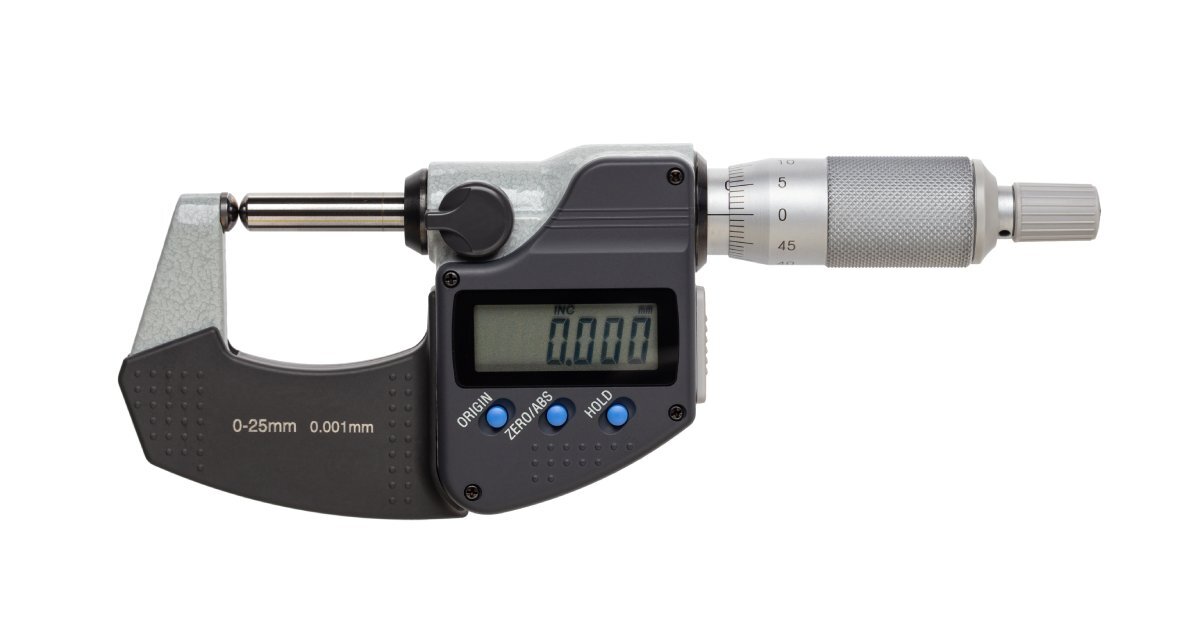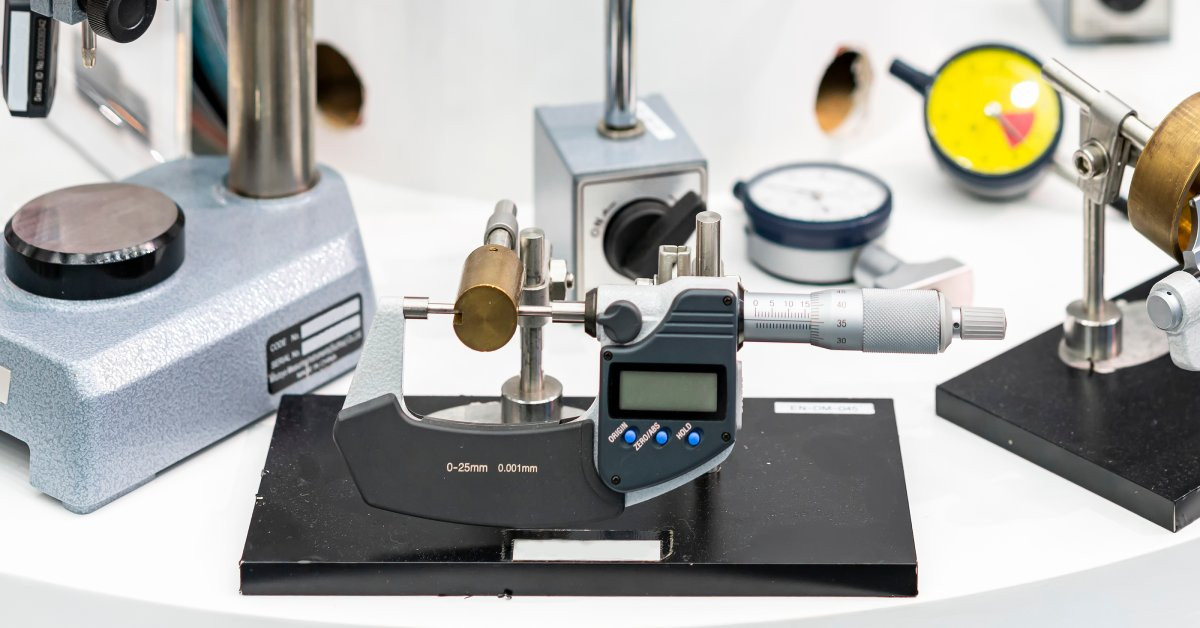Precision measurement has always been the backbone of quality manufacturing, and getting accurate data from those measurements can make or break your quality control process. Mitutoyo micrometers allow for fast, easy, and precise readings you can trust. But if you’re still recording those readings by hand, you’re not taking full advantage of the efficiency and accuracy of a good digital micrometer.
The good news is that automating data acquisition with your existing Mitutoyo micrometers is easier than you might think. You don’t need to replace your trusted measurement tools or invest in expensive new equipment. Instead, you can integrate simple hardware solutions that capture your measurements automatically and feed them directly into your data management systems. This approach saves time, eliminates human error, and gives you the detailed measurement records you need for comprehensive quality analysis.
Read on to learn everything you need to know about automating data collection with Mitutoyo micrometers and start optimizing your data collection today.
Mitutoyo Micrometers and Their Importance

Mitutoyo micrometers have earned their reputation as industry-standard precision measurement tools for good reason. These instruments deliver the accuracy and reliability that manufacturers depend on for critical measurements, whether in aerospace, automotive, medical device manufacturing, or any other field where precision matters.
What makes Mitutoyo micrometers particularly valuable is their consistent performance over time. These tools maintain their accuracy through thousands of measurements, providing the repeatability that quality control processes require. When you’re measuring critical dimensions on machined parts or checking incoming materials against specifications, you need measurement tools that deliver the same level of precision every single time. Mitutoyo micrometers provide that consistency, which is why they’ve become the go-to choice for manufacturers.
The Dangers of Manual Data Logs
The digital readouts on modern Mitutoyo micrometers make measurements easier to read and reduce the potential for operator error when interpreting results. However, even with digital displays, the process of manually recording those measurements introduces opportunities for mistakes. Operators might misread the display, transpose numbers when writing them down, or skip measurements entirely when working under time pressure. These human factors create data quality issues that can undermine even the most carefully designed quality control programs.
The Benefits of Automating Data Collection
Automating your data collection process transforms how you handle measurement data and creates immediate improvements in both efficiency and accuracy. The most obvious benefit is the elimination of manual data entry, which removes a significant source of errors from your quality control process.
When measurements flow automatically from your instruments to your data systems, you eliminate transcription errors, misread displays, and forgotten measurements that can compromise your quality records.
Reducing Human Error
Human error in measurement recording happens more often than people realize, and the consequences can be significant. Operators working under time pressure might rush through data entry, leading to transposed numbers or skipped measurements. Even careful operators can misread digital displays or make simple writing mistakes that introduce errors into quality records. These errors don’t just affect individual measurements; they can skew statistical analyses and lead to incorrect conclusions about process capability and product quality.
Automated data acquisition eliminates these error sources by capturing measurements directly from the instrument’s digital output. This reliability means you can trust your measurement data completely, which is essential for making informed decisions about product quality and process improvements.
The impact of eliminating human error extends beyond data accuracy. When operators know that their measurements are being captured automatically and accurately, they can focus entirely on proper measurement technique, which leads to better measurement practices overall.
Accurate Records Without Disrupting Workflow
One of the biggest advantages of automating data collection with Mitutoyo micrometers is that it integrates seamlessly into existing measurement workflows. Operators continue using their Mitutoyo micrometers exactly as they always have, but now the measurements get captured automatically without any additional steps or procedures. This transparency means that automation doesn’t require retraining operators or changing established measurement practices that already work well.
Manual data recording can significantly slow down inspection processes, especially when operators need to record multiple measurements per part or when they’re inspecting large batches of components. Automated data collection eliminates this bottleneck, allowing operators to move through inspection tasks at the speed of measurement rather than the speed of data entry.
Easier Data Analysis
Automated data collection creates measurement databases that are perfect for statistical analysis and trend identification. When all your measurement data is captured consistently and stored in organized formats, you can perform analyses that would be impractical with manually recorded data. Statistical process control, capability studies, and trend analysis all become straightforward when you have clean, comprehensive measurement data sets.
The time savings in data analysis can be substantial. Instead of spending hours cleaning up manually entered data, correcting errors, and organizing information for analysis, you can work directly with clean data sets that are ready for immediate analysis. This efficiency means you can perform more frequent analyses and respond more quickly to quality trends or process changes.
Having reliable measurement data also enables more sophisticated analyses that can reveal insights about your manufacturing processes and product quality. You can identify subtle trends that might indicate developing problems, perform correlation analyses that reveal relationships between different process parameters, and create control charts that provide early warning of process changes.
Mitutoyo Micrometers and Multi-Input Gage Interfaces
Setting up automated data acquisition with your Mitutoyo micrometers is straightforward when you use multi-input gage interfaces. These devices directly connect your existing micrometers to any computer or tablet, allowing you to automatically capture measurement data in any management software of your choosing. The process doesn’t require any modifications to your tools or changes to your measurement procedures.
Simple Hardware, Lasting Solutions
The beauty of using multi-input gage interfaces with your Mitutoyo micrometers lies in the simplicity of the solution. These systems are designed as plug-and-play devices that don’t require software installations, complex configurations, or ongoing maintenance. You connect your micrometers, configure basic settings, and start collecting data immediately. There are no software updates to manage, no compatibility issues to resolve, and no ongoing technical support requirements.
This simplicity translates into long-term reliability and cost-effectiveness. Because the hardware solutions are straightforward, they continue working consistently over years of use. You don’t have to worry about software updates breaking your data collection system or compatibility problems arising when other systems get upgraded. The hardware interface continues capturing measurement data reliably regardless of changes to your other computer systems.
The plug-and-play functionality means you can implement automated data collection quickly without disrupting your production schedules or requiring extensive downtime for system installation and testing. You can set up the system during a scheduled maintenance period or even during normal production hours without affecting your measurement operations. This ease of implementation makes it practical to automate data collection even in busy manufacturing environments where downtime is costly.
Optimize Your Data Collection With Advanced Systems and Designs

The right tools bring efficiency and reliability to your manufacturing operations. Visit Advanced Systems and Designs today to find the right digital micrometer and gage interfaces to automate your data collection and create faster, simpler, and more dependable workflows for your team.

